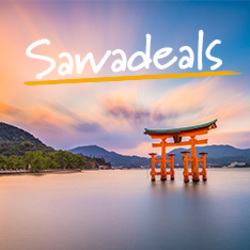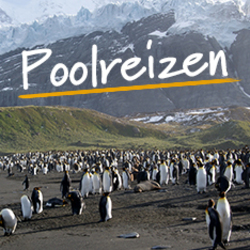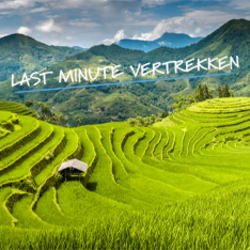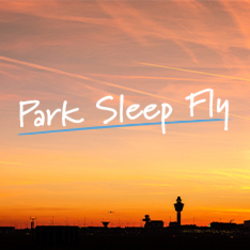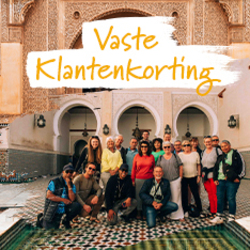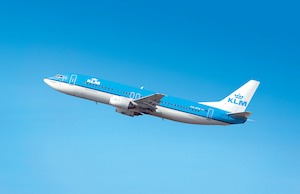Activities
- Culture
- Natural Wonders
- Visit colonial Quito, the Otavalo Indian market and Cuenca's UNESCO Heritage Reserve. Overnight in the peaceful Bellavista Cloud Forest Reserve. Two nights to soak up the sounds of the Amazon Rainforest. Visit the ruins of Ingapirca and Cajas National Park. Take a mangrove boat trip by the Pacific Coast and visit a Cacao plantation
Food
-
1
Start Quito.
The group flight usually arrives into Quito this evening and clients will be met and transferred to the start hotel. Land Only clients can make use of our free airport transfer to the start hotel today - please read the joining information for more details. Accommodation: Hotel Vieja Cuba (or similar)
-
2
Quito city tour; Bellavista Cloud Forest Reserve.
This morning's short walking tour of Quito is the perfect opportunity to meet your guide and get to know your fellow travellers. The heart of old Quito is a colonial masterpiece and the capital is widely regarded as one of the most beautiful cities in South America, as well as being a UNESCO site. Leaving Quito behind we drive towards the North-Western slopes of the Andes where Bellavista Cloud Forest is located. Situated at the top of the Tandayapa Valley, Bellavista is a private reserve bursting with orchids, bromeliads, toucans, tanagers and hummingbirds. The area is a paradise for naturalists with a vast network of hiking trails. Accommodation: Bellavista Cloud Forest Reserve & Lodge (or similar)
-
3
Spot birds in Bellavista; to hacienda.
An early start this morning to appreciate the diversity of Bellavista and spot some of its many bird species. The reserve has previously won awards for its high bird count - there are 20 different species of Hummingbird to look for! Following this morning's excursion we drive towards Northern Ecuador and the beautiful hacienda that will be our home for the next few nights.Accommodation: Hosteria Pantavi (or similar)
-
4
San Clemente Indigenous Community.
After breakfast we travel towards the foothills of the Imbabura Volcano where the indigenous community of San Clemente is located at 2900m. The community consists of a number of local indigenous families whose main livelihood comes from farming and agriculture. We have a guided tour by one of the families, who will introduce us to a number of native and medicinal plants, explain traditional embroidery techniques, tell us about their culture and show us the day-to-day activities that take place within the community. A traditional lunch will be prepared using locally grown produce. This afternoon we drive back to our hacienda with the rest of the afternoon free to relax in the beautiful gardens of Pantavi.Accommodation: Hosteria Pantavi (or similar)
-
5
Walk at Cuicocha Crater Lake; visit Indian Otavalo.
Drive to Cuicocha Crater Lake at approximately 3000m. This beautiful caldera (volcanic crater) is about 2 miles/3km wide and was formed over 3000 years ago by a massive volcanic eruption. We start a scenic walk along one section of the lake (up to 3 hours duration) to take in the impressive scenery, before continuing our journey to Otavalo. Otavalo is situated in a valley at 2250m, the town is well known for its bustling Indian Market. There are many of stalls and locals wear traditional colourful clothes - a fantastic introduction to Andean life and a good place to pick up some souvenirs. We have some time to soak up the atmosphere before continuing our journey. Overnight in a 400-year old colonial hacienda.Accommodation: Hacienda SuMerced (or similar)
-
6
Visit Papallacta Hot Springs; to Amazon Rainforest.
A short journey driving over the dramatic (and breathless at 4069m!) Papallacta Pass. Located east of Quito, the Papallacta Hot Springs are regarded as the nicest of all Ecuador. We have some time to bathe in both hot and cold pools as the snow-capped Antisana Volcano (5758m) looms over the horizon. We continue our journey, driving around the flanks of the Antisana Volcano before the descent into the Amazon Basin to our rainforest lodge. After a short briefing we take a night walk to discover our new surroundings - there are fantastic night-time sounds to listen out for, a wonderful experience amidst the humidity of the rainforest. Accommodation: Liana Lodge (or similar)
-
7
Rainforest exploration; AmaZoonico Animal Rescue Centre.
Discover the Amazonian basin on foot. The incredible biodiversity of the rainforest environment will be explained by our indigenous guide, who will show us the most interesting and medicinal plants. There is a good chance of seeing kingfisher, parrot, oropendula and other bird species. Squirrel and Capuchin monkeys can be seen in this area, although other larger mammals are considerably more shy and harder to spot. The insect life is also fascinating, with beautiful butterflies flashing by and Army ants and Leaf-cutters on patrol. Visit the AmaZoonico Animal Rescue Centre where we can see some of the forest's larger inhabitants such as tapir, capibara, pecari and various species of monkey.Accommodation: Liana Lodge (or similar)
-
8
To Banos; visit Devil's Couldron waterfall.
Begin the wonderfully scenic drive west along the 'Road of the Waterfalls' with spectacular views of the upper Amazon Basin and the Andes towering above. The climb back to the highlands is mesmerising as we watch the ecology change and the many waterfalls cascade from the high peaks into the lush valley of the Pastaza River. There are good photo opportunities along the way, including a visit at the Pailon del Diablo (Devil's Cauldron) waterfall. Continue on to Banos, a picturesque hot spring and pilgrim town adjacent to the 5000m high volcano of Tungurahua, where we’ll spend the next two nights. In the late afternoon, we’ll have a walking tour of Banos.Accommodation: Hotel Sangay (or similar)
-
9
Walk in Chimborazo N.P.
Drive to the region of Chimborazo for a short walk (around two hours) in Chimborazo National Park, located at approx. 4600m. Due to the equatorial bulge the summit of Chimborazo is the furthest place from the centre of the earth! In the national park there are good possibilities to observe vicuñas, a relative of the llama. This afternoon we return to Banos; there should be a chance to visit the thermal baths on our return, depending on the time.Accommodation: Hotel Sangay (or similar)
-
10
To Ingapirca and Cuenca
It is an early start today as we head to Cuenca. We’ll stop to visit the Balbanera church before continuing to Ingapirca, the largest Inca ruins in Ecuador. The Inca Empire stretched along the Andes north through Ecuador into Colombia and south through Peru and deep into Chile. Ingapirca has fine examples of their famed brickwork as well as a solar observatory. We descend from the highlands to colonial Cuenca where we stay for the next two nights.Accommodation: Hotel Santa Lucia, Hotel Victoria, Hotel Carvallo (or similar)
-
11
Half day city tour of Cuenca.
Like Quito's old centre, Cuenca is a UNESCO World Heritage Site and a charming place to explore. A guided tour this morning takes in the remarkably intact old town, where many artisans have taken up residence amidst the narrow colonial streets and famous landmarks. The afternoon is free to discover the town at your own leisure.Accommodation: Hotel Santa Lucia, Hotel Victoria, Hotel Carvallo (or similar)
-
12
Walk in Cajas N.P.; to Los Chorreras.
A short drive this morning brings us to Cajas National Park, otherwise known as the 'Gateway to the Snowy Mountains' in local Quichua. This is a stunning area of lofty peaks, lagoons, lakes and rivers amidst pristine paramo vegetation. During a walk of around 2 hours we may encounter some of the 125 bird species recorded here, such as Yellow-billed pintails, Ecuadorean hillstar or Violet-throated metaltail. With good weather we are rewarded with stunning views of this well-preserved national park during our walk. We stay in a hotel close to Cajas National Park for our last night in the Andean Highlands before we descend towards the coast. Accommodation: Hosteria Dos Chorreras (or similar)
-
13
Mangrove boat trip; visit cacao plantation.
Today we descend towards the Pacific and visit the Manglares Churute Ecological Reserve where we take a boat excursion through the incredible mangrove forest. This important eco-system has both Red and Black mangrove species and provides opportunities for seeing a number of aquatic birds and other wildlife along the many small river inlets. In the afternoon we visit a cacao plantation to learn about the production of one of Ecuador's biggest exports. After this we travel to Guayaquil, the main port town in Ecuador, for our final evening together.Accommodation: Grand Hotel Guayaquil (or similar)
-
14
Depart Guayaquil.
The trip comes to an end today after breakfast and it's time to bid Ecuador and the rest of the group goodbye. Free transfers to Guayaquil airport are available to all clients today. Those on group flights will fly this evening and arrive in the UK the following day.




